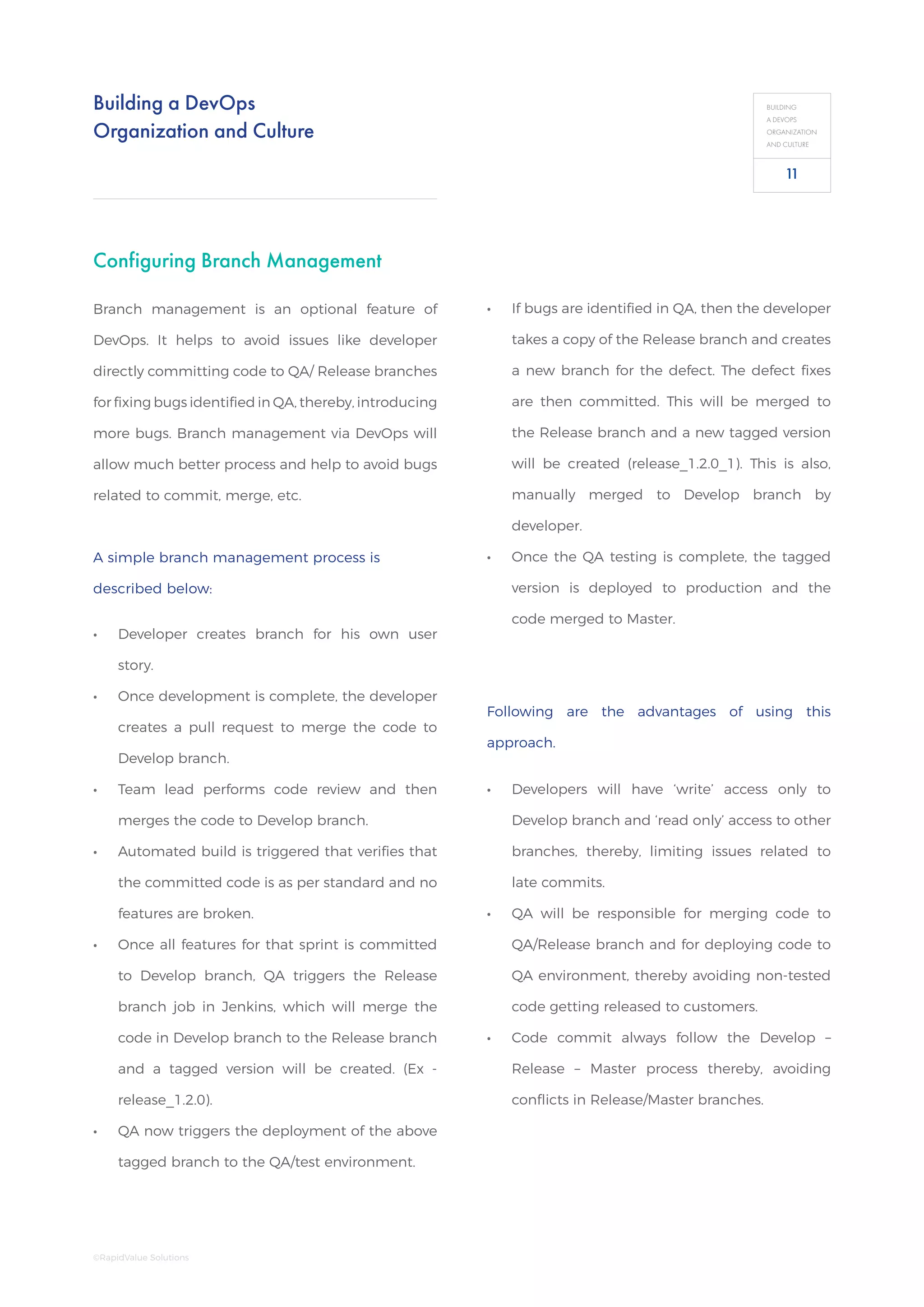The whitepaper by RapidValue Solutions discusses the importance of building a DevOps organization and culture to enhance collaboration between development and operations teams. It emphasizes that successful adoption of DevOps requires not only tools for automation but also a cultural shift towards shared responsibility, autonomous teams, and continuous feedback to ensure efficiency in the software delivery process. Additionally, the document outlines key roles necessary for a DevOps team and provides guidelines for implementing effective practices, including continuous integration and delivery.
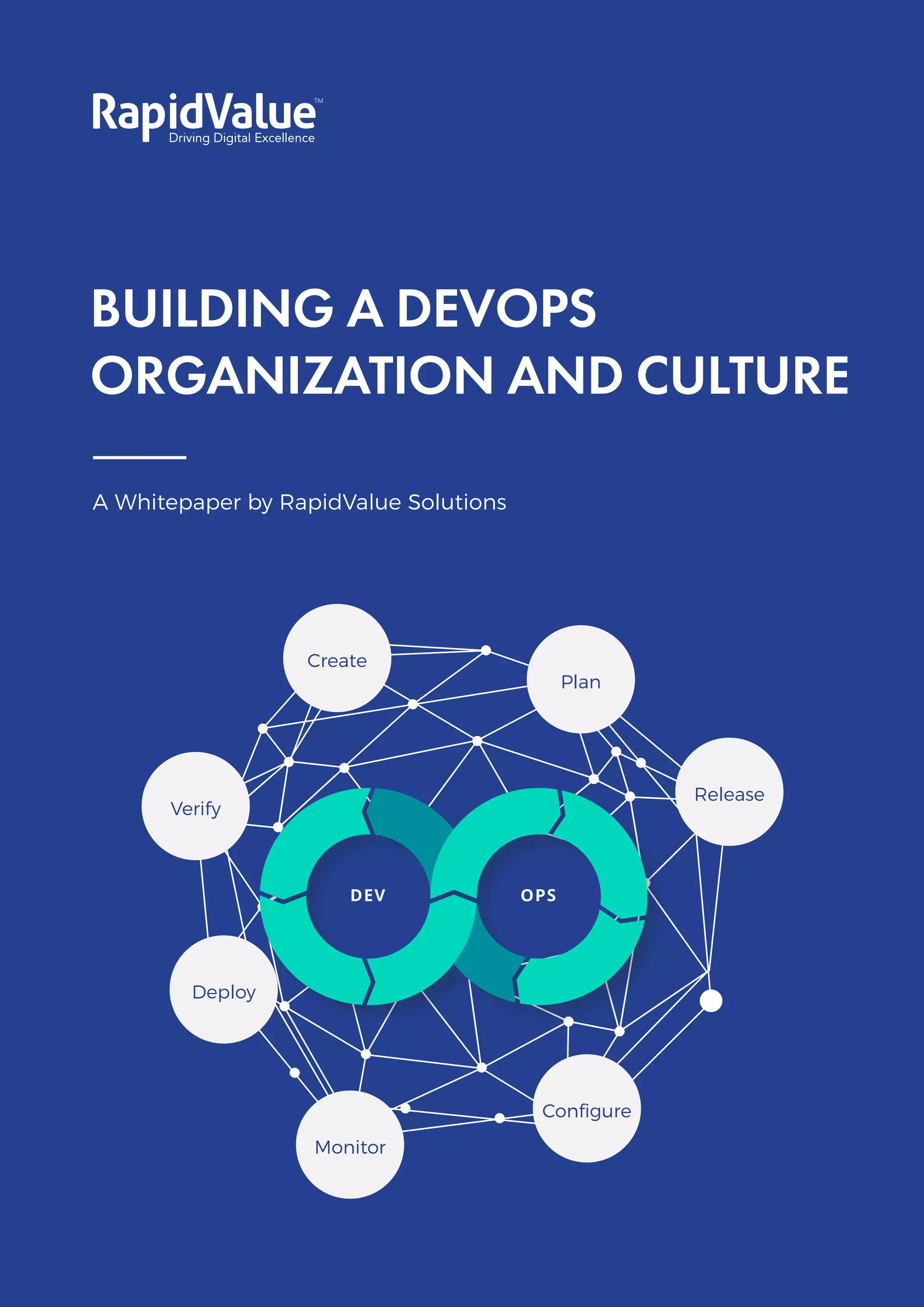
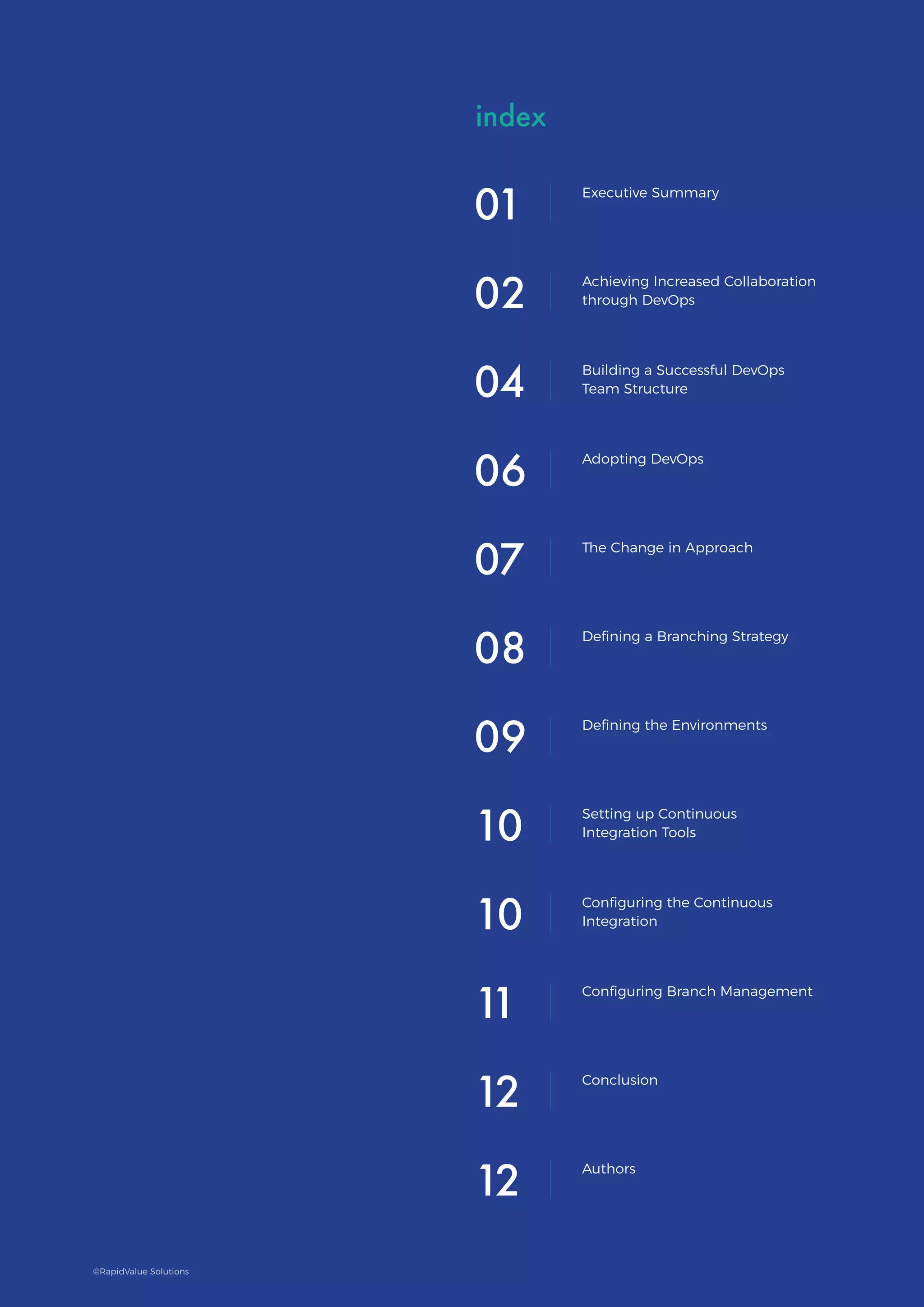
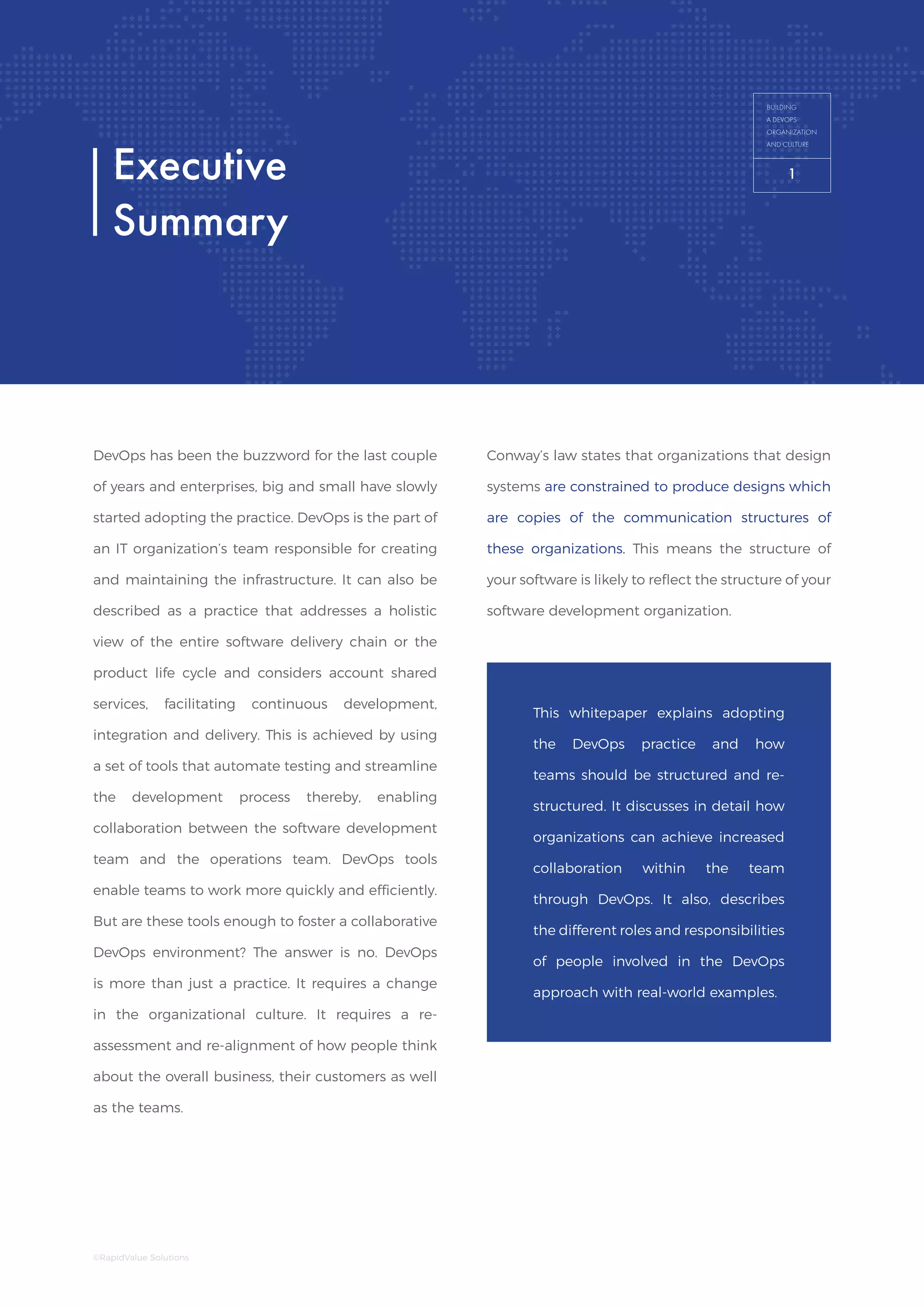
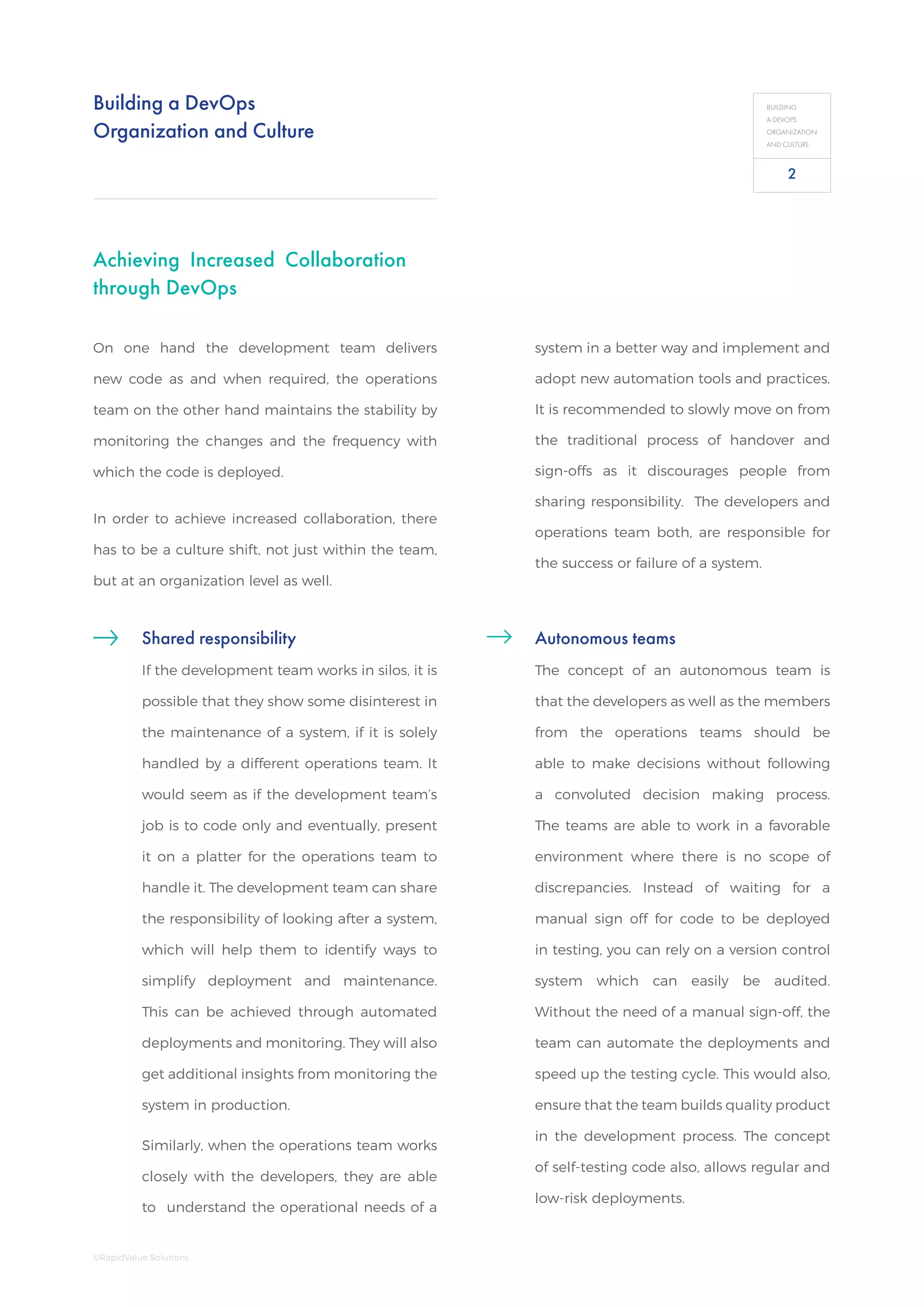
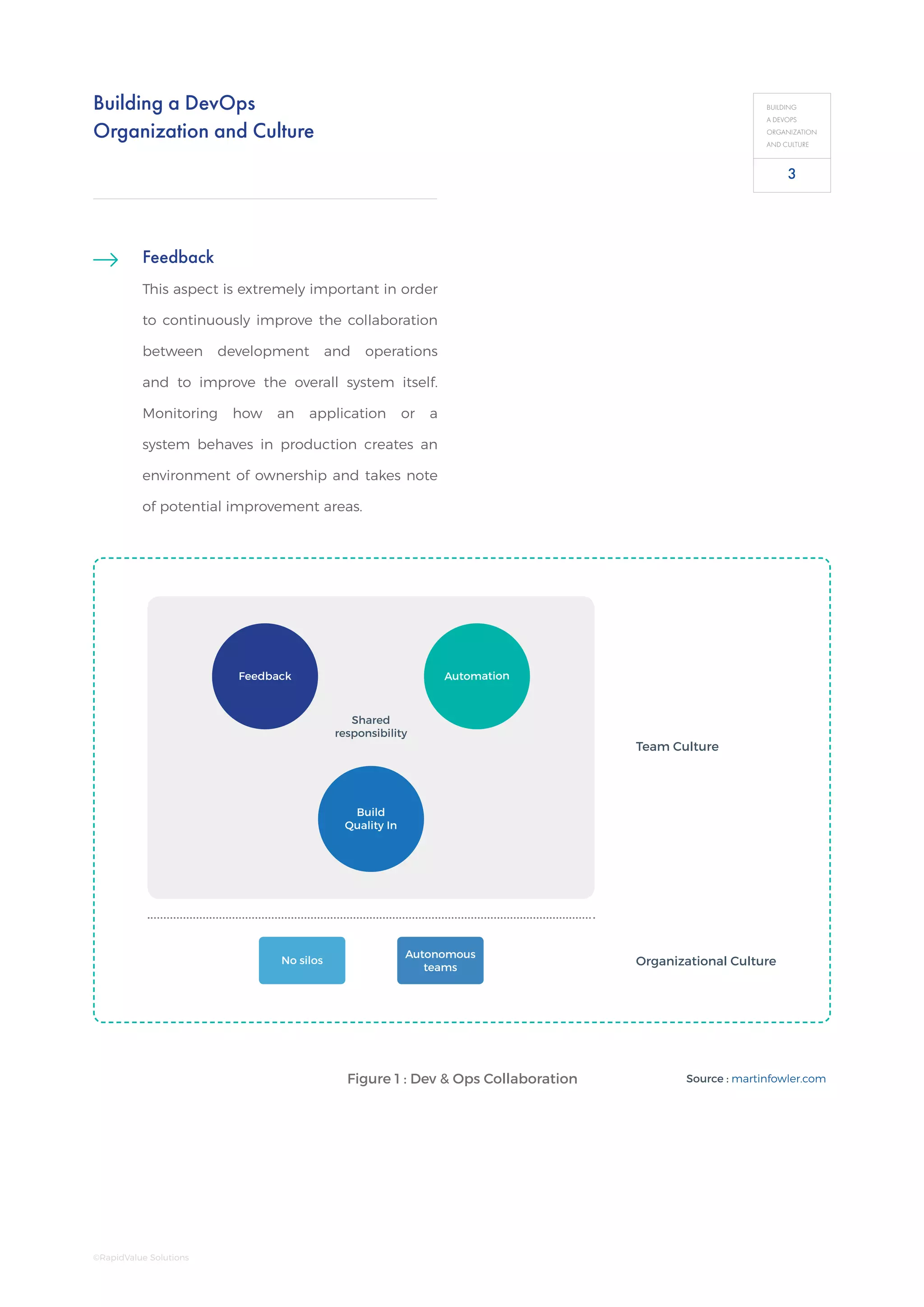

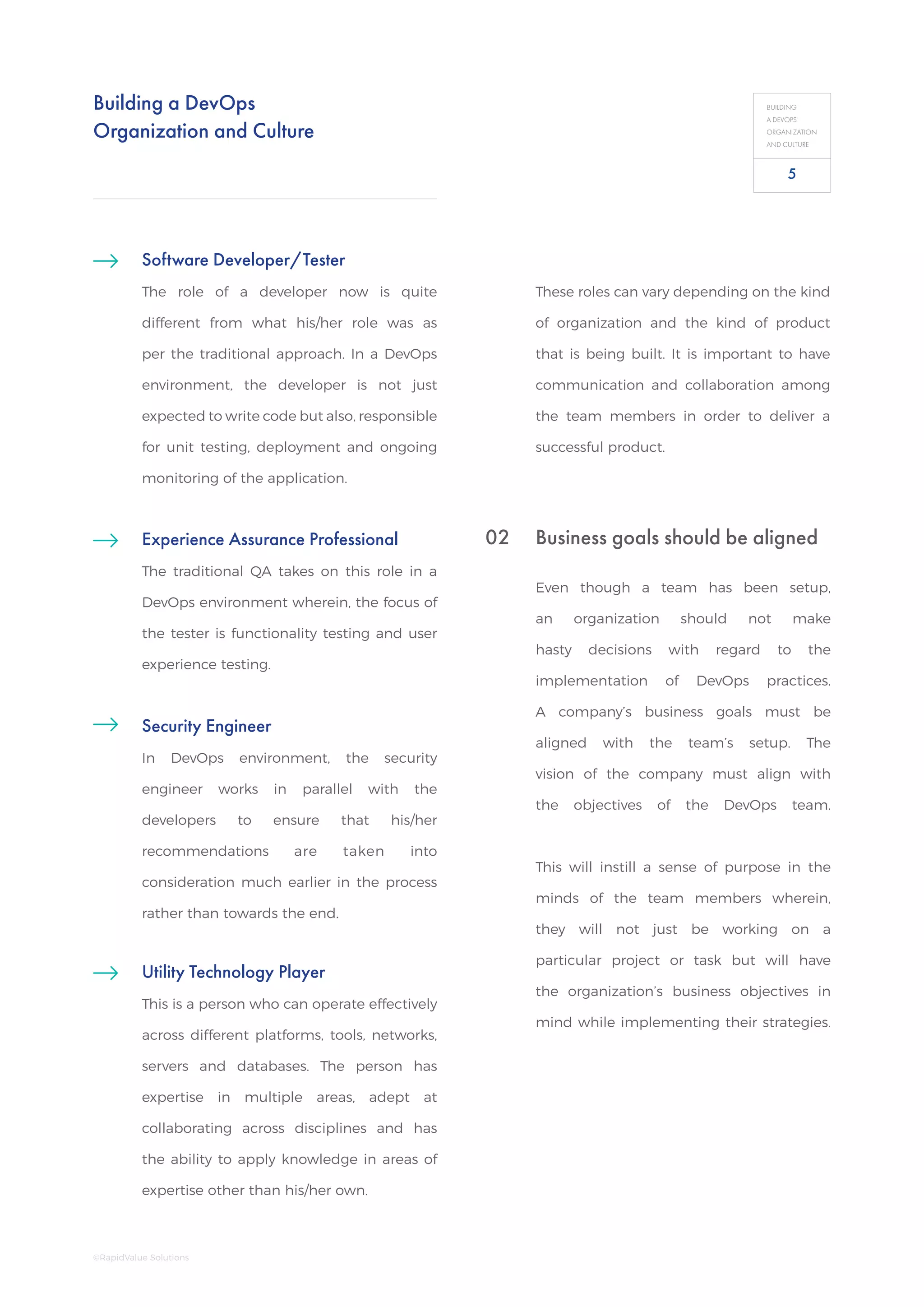


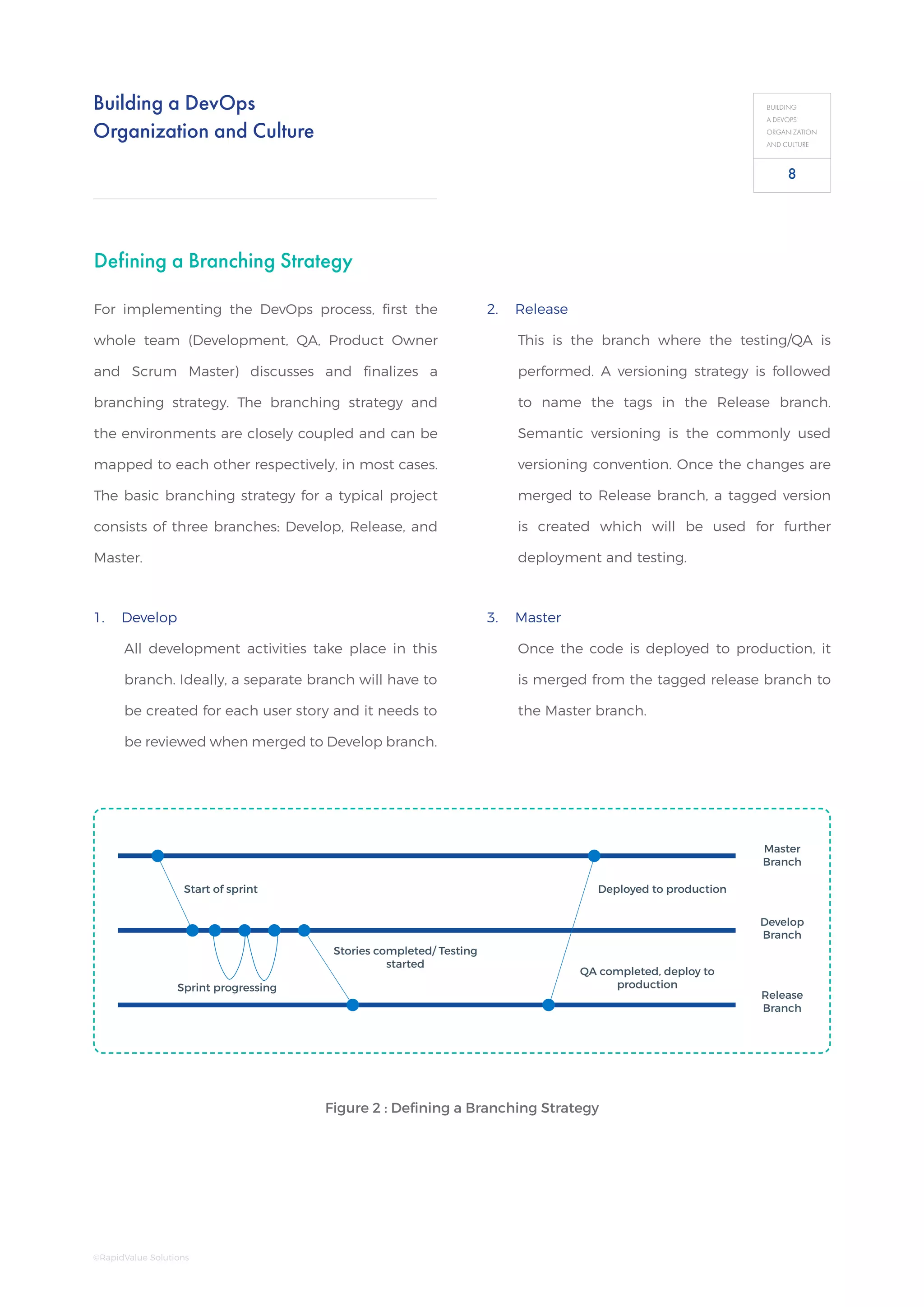

![Building a DevOps
Organization and Culture
BUILDING
A DEVOPS
ORGANIZATION
AND CULTURE
Setting Up Continuous Integration Tools
Jenkins is the most popular and commonly used
continuous integration tool across industry. It can
integrate with multiple source repositories like Git,
SVN, etc and also, has plugins for integrating with
variety of systems/tools. Jenkins can be installed in
a standalone machine or can be installed on cloud
instance. Alternatively, there are Jenkins services
available which can be directly used as containers
where in Jenkins image can be deployed.
Once installed, the Jenkins UI can be accessed
over the browser and all the configurations can be
performed via the UI.
Configuring the Continuous Integration
There are many different ways to configure Jenkins
to perform continuous integration. Below are
some of the key methods:
Jenkins can be configured to deploy applications
to servers directly such as weblogic or can also,
be configured to deploy to cloud-based instances
[Azure, AWS].
Once the configurations are done, when the
source code is committed by any developer, the
build job is triggered automatically. It performs
all the analysis, creates the deliverable and sends
out an email to all the users about the build status
[success / failure].
•• Creating job to checking out from source
repository (SVN, GIT).
•• Trigger the build job so as to trigger build
when code is committed.
•• Invoke source code analysis – for static code
analysis (SonarQube).
•• Invoke unit test and integration testing – for
test verification.
•• Invoke coverage tool for coverage report.
•• Create the deployable deliverable (jar, war) and
add to repository.
Below are the key steps for performing continuous
integration.
•• Creating separate job for deploying to an
environment.
•• Configuring periodic jobs for deploying to an
environment.
10
©RapidValue Solutions](https://image.slidesharecdn.com/devopstheteamsetuporganizationalculturechange-180327085757/75/Building-a-DevOps-Organization-and-Culture-12-2048.jpg)
